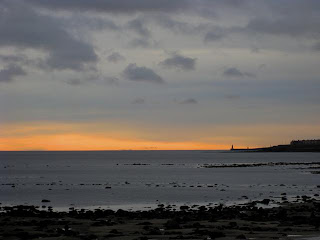 I think the term some use is 'record shot'.
I think the term some use is 'record shot'.28th Feb. Had it not been a leap year we would be entering March tomorrow. What a difference from some early days in the month when everything was frozen solid. Sunlight carpeted the lake today as I at last returned to patch. I kept an eye out for Nuthatches as I strolled down to the lake, but like last year there was no sign of them in their old territory. A flock of gulls on the playing field was made up of around thirty Common Gulls (many more of them on the lake) and a few Black Headed Gulls. Nearby there was a pair of Oystercatchers, their orange bills hidden by mud from their searching for food in the soft ground. For a time they pottered around the goal posts looking every bit as adept as a ‘Toon’ centre back defending a corner or free kick. They eventually took to flight and their call was heard in the distance. I decided against giving them names, as I felt it would get tiresome if I had to keep looking up how the name Fabricio Coluccini was spelt!
I’m pleased to say the pair of Great Crested Grebes are back on the smaller lake too and looking ready to set up nest. I recorded them on the 20th February last year so I suspect they may have been here for a few days now. Another lone Great Crested Grebe was on the larger lake. This follows the pattern of last year when I recorded three of these birds present on 24th February. I don’t think a fourth bird was hidden today. They certainly won’t be able to hide a nesting site on the bald floating reed-bed this year! Anyway I hope both pairs meet with successful breeding again this year. I said hello to someone photographing the birds.
I saw no Goosanders today. There were however eleven Goldeneye. These birds, especially the males, looked stunning in the sunlight. There were definitely four pairs of birds amongst the eleven. The usual flocks of birds were on or around the lake. I noticed the red and yellow of the Moorhens bills showed sharply in the light as did the head colouring of the Mallards. The family of Greylag remain.
As I walked home I caught sight of the Sparrowhawk circling high over the trees of the church ground and then slowly working along the village until at last out of sight. A Magpie was carrying a very large twig to the nest. It certainly felt more than ever, like spring today.






























